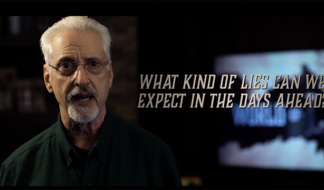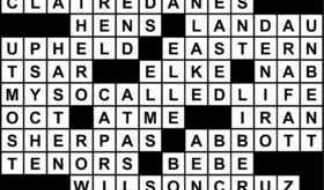By Camper English
Cocktail Chatter
No matter where you are in the world, whisk(e)y is a pain in the butt to spell, because it is spelled differently in the other parts of the world from where you are. It's appropriate to use the local spelling of other changeably-spelled words like favo(u)r and colo(u)r, but whisk(e)y snobs won't give you a break.
That's too bad, because all whisk(e)y starts the same, as grain that is fermented and distilled and then nearly always aged in barrels.
Scotland makes the most famous whisky (no "e"), and most of it falls into two categories. Single-malt scotch comes from a single distillery, but more importantly it is made only from malted barley in pot stills. This means it has a lot of flavor going into the barrels. Some single-malts you may know include The Glenlivet, Glenfiddich, and Glenmorangie.
The other major type of scotch whisky is blended scotch, made from mixing the flavorful single-malt with lighter column-distilled whisky. Together you get a softer (and usually less expensive) liquid. Major brands of blended scotch include Chivas, Johnnie Walker, and Dewar's.
Think of the flavor of single-malt scotch as whole grain bread, and blended scotch as wheat bread. And for something closer to French bread, we look to the U.S.
In America, most of the local whiskey (note the 'e') is bourbon, and most of the grain used in bourbon is corn. Bourbon is usually column distilled and always aged in new barrels that give off a lot of flavor. (Scotch is mostly aged in less-flavorful used barrels, which is one reason scotch usually ages for longer than most bourbon.) Jim Beam and Maker's Mark are bourbons, and Jack Daniel's is not considered one due to a slight production difference. Still, it's a heck of a lot closer to bourbon than it is to scotch.
Much Irish whiskey (with an "e"), though produced differently, is similar to blended scotch in its softness and drinkability. Most Canadian whisky (no "e") is light-bodied and really meant for mixing. Let's say that Canadian whisky is white bread and Irish whiskey is ciabatta. I know I'm stretching this whole bread analogy here, but is anyone else in the mood for a sandwich?
The Americans and the Scotts seem to be the most loyal to their local whiskies. Bourbon snobs will tell you that scotch is good for mixing, and scotch snobs think their favorite tipple is too good even for mixing with ice. There are cocktails that call for specific types of whiskies though: the Bobby Burns, Sazerac, Seven and Seven, and the Irish Coffee deserve to have their native spirits poured into them.
One cocktail works with every whisk(e)y, and that's the Manhattan. Naturally, the Scotts can't stand for that and instead insist it be called the Rob Roy. As far as I know the Irish and Canadians haven't renamed the drink, which is good because then we'd have to memorize these along with all the different spellings of the whisk(e)y that goes into them.









